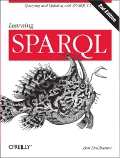My MP3 player is a Sandisk Sansa. It does everything I would want an iPod to do with a slightly clunkier interface for much less money. I can move music, podcasts, and playlists onto it from free software on both Windows and Linux machines, and it works with all standard MP3 accessories such as my noise-cancelling headphones and my in-car player. It can even record live room sound.
I don't think I'd even heard of Sandisk before I bought the device. I always assumed that they were based along the western edge of the Pacific Rim, but I just found out that they're actually in California. No matter; the last time I needed an MP3 player, they had the best price/performance ratio in the local BestBuy, and they didn't try to lock me into some distribution deal for the content I play on their device. (It may have included a CD and a deal with some music downloading service, but I ignored it and got along just fine.) Someday when I replace it, I might get something else, because I have no brand loyalty to it—I'm looking for good performance at a low price, not a fashion accessory.
Comparisons to the OLPC look like a red herring to me.
I'm looking forward to getting an eBook reader, and the details of Amazon's Kindle helped me realize what I really want in an eBook reader. It ain't Kindle. While the term "delivery platform" has become an over-used buzz phrase, Amazon sure has created one: you pay them $400 for a device that only they can deliver content to.
Some people (I'm sure to Amazon's delight) have called it "the iPod of eBook readers", but Apple never charged people to move MP3s from CDs that they already owned—or MP3s that they had recorded themselves of their own kids, bands or whatever—to the iPod. Once you've bought the Kindle, you can't move your own content from your computer over a USB connection to your new eBook device to read it there; you have to mail it (if it's on the approved list of formats such as Microsoft Word and JPEG) to your device via Amazon's servers. No thanks.
The key thing that Kindle has in common with its most well-known predecessor, Sony's eBook reader, is the use of the e-ink high contrast low power display. What I'd really like to see is some commodity electronics manufacturer crank out an inexpensive machine around an e-ink display that let us view .epub eBooks and PDF files—the Sansa of eBook readers. Along with the low overall weight of the device, this high contrast low power display is the most important feature of an eBook reader, because otherwise, why not just use the computers that we already own to read electronic documents? This is why comparisons to the OLPC look like a red herring to me—it doesn't use much power, and I'm all for its general goals, but if the screen isn't any better than the Dell my employer supplied me with or the Lifebook where I keep my own stuff, I don't see the point of buying another computer just for reading.
Publishers interested in the eBook market are not giving Amazon exclusive distribution rights, which is encouraging to those of us who want to pick a reading device and then separately pick distribution channels (or even—just imagine!—make our own content for the device without relying on a big established distributor). I also want the ability to replace the device with another one from a different manufacturer and still use all the same content that I had paid for.
It sure would be interesting to see who's been buying the Linux-based $3,000 and $4,000 prototype kits from E-ink. Their website says that Seiko and Casio have been working on E-ink timepieces. I've never known Seiko to make anything but watches, but Casio has a wide range of products. (I still have my old CZ-101 keyboard.) I'd love to see Casio make a $150 E-ink reader, and then the Sandisks of the world could make their $99 versions.
And if any of these devices can play MP3s through a headphone out jack, I promise not to complain that it's trying to do too many things. Reading and listening to music often go well together.


I don't understand the comment "Comparisons to the OLPC look like a red herring to me."
My understanding was that the XO Laptop had a dual display--regular rez colour and high rez black and white.
Please explain. Many thanks.
I hadn't heard about the high-res black and white. I look forward to checking it out.